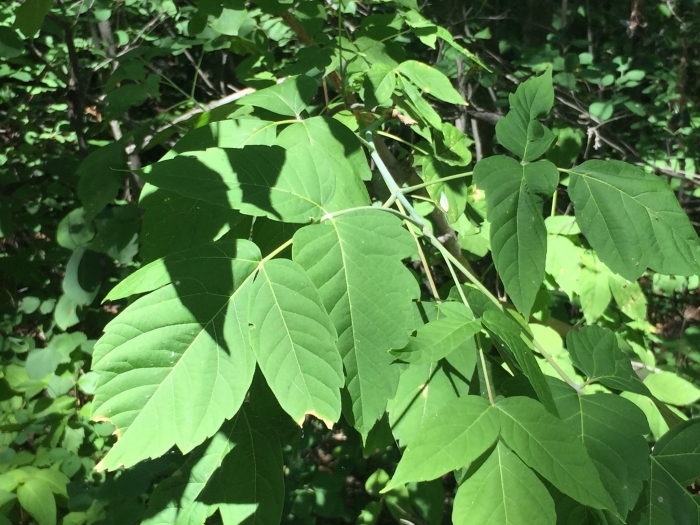Box Elder
(Acer negundo)
Box Elder (Acer negundo)
/
/

Mary Krieger
CC BY 4.0

























































































Estimated Native Range
Summary
Box Elder is valued for its adaptability to a wide range of soil conditions, including wet and dry sites, and its ability to grow in full sun to part shade. It is often used in urban areas for its tolerance to pollution and soil compaction. However, it is also known for its brittle wood, which can lead to branch breakage. The tree is susceptible to box elder bugs, which, while not harmful to the tree, can become a nuisance. In cultivation, it is important to provide adequate space for its growth and to be aware of its potential to self-seed and become weedy. It is recommended to avoid planting near paved surfaces due to its shallow root system.CC BY-SA 4.0
Plant Description
- Plant Type: Tree
- Height: 35-80 feet
- Width: 30-50 feet
- Growth Rate: Rapid
- Flower Color: N/A
- Flowering Season: Spring
- Leaf Retention: Deciduous
Growth Requirements
- Sun: Full Sun, Part Shade
- Water: Medium
- Drainage: Fast, Medium, Slow
Common Uses
Bee Garden, Bird Garden, Butterfly Garden, Deer Resistant, Drought Tolerant, Edible*Disclaimer: Easyscape's listed plant edibility is for informational use. Always verify the safety and proper identification of any plant before consumption., Erosion Control, Low Maintenance, Salt Tolerant
Natural Habitat
Riverbanks, floodplains, wet woodlands, open woodlands, and prairies
Other Names
Common Names: Ash-Leaf Maple , Box-Elder , Three-Leaf Maple , Ash-Leaved Maple , Ashleaf Maple , Maple Ash , California Boxelder , Manitoba Maple , Box Elder , Boxelder Maple
Scientific Names: Acer negundo , Acer negundo var. variegatum , Acer negundo f. sanguineum , Acer negundo f. auratum , Acer negundo f. angustifolium , Acer negundo f. aureolimbatum , Acer negundo f. aureomarginatum , Acer negundo f. crispum , Acer negundo f. giganteum , Acer negundo var. aureovariegatum
GBIF Accepted Name: Acer negundo L.